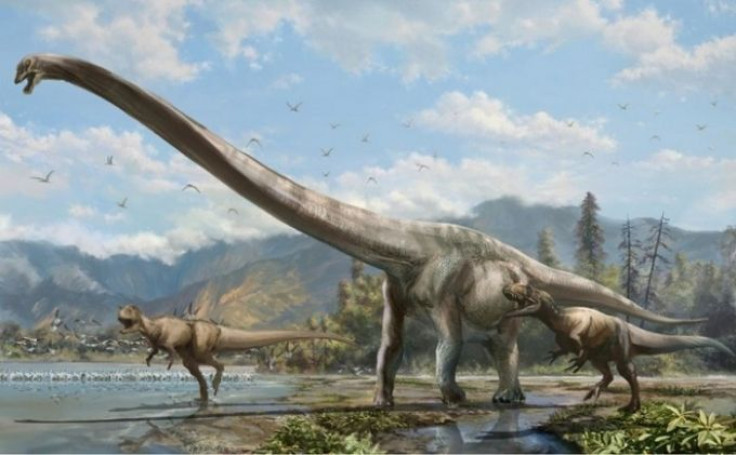'Dragon' Dinosaur Discovered In China Reveals What Happens When Jurassic Beasts Become Isolated

Scientists have discovered the remains of a new species of long-necked dinosaur in China that is unlike all its towering relatives. The Jurassic beast had a neck half the length of its body, longer than most other sauropods, whose necks typically made up about a third of their body lengths. Researchers described the newfound dinosaur in a study published this week in the Journal of Vertebrate Paleontology.
The dinosaur, dubbed Qijianglong, lived around 160 million years ago during the Late Jurassic period and measured roughly 15 meters (50 feet) in length. Its name means “dragon of Qijiang” for the city in southern China where the sauropod’s fossilized remains were uncovered.
Sauropods were a family of prehistoric behemoths with pillar-like legs, tiny heads and long tails, and were among the largest creatures ever to roam the earth. Their gigantic neck vertebrae were actually full of air, which made it possible for the reptiles to hold them up.
Researchers said the new dinosaur species could shed light on sauropod diversity. “Qijianglong shows that long-necked dinosaurs diversified in unique ways in Asia during Jurassic times. Something very special was going on in that continent," Tetsuto Miyashita of the University of Alberta, which led the excavation, said in a statement. "Nowhere else can we find dinosaurs with longer necks than those in China.” Miyashita added that Qijianglong’s size “tells us that these extreme species thrived in isolation from the rest of the world."
The fossils were discovered in 2006 by construction workers. Researchers were lucky to recover several vertebrae bones belonging to Qijianglong as well as its partially intact head. “China is home to the ancient myths of dragon,” Miyashita said. “I wonder if the ancient Chinese stumbled upon a skeleton of a long-necked dinosaur like Qijanglong and pictured that mythical creature.”
Qijianglong isn’t the only "extreme" dinosaur to come out of China in recent years. In 2014, paleontologists detailed their findings of a new species of dinosaur they called “Pinocchio Rex” for its long, slender snout. Scientists said it had the characteristic “toothy grin” of its famed cousin, Tyrannosaurus rex, but a very different muzzle.
Earlier that year, a team from the University of Pennsylvania revealed what it had learned about China’s ancient sauropods from fossils recovered from Gansu province in the northwest. Researchers said the discoveries suggested that China had some of the most evolutionarily advanced sauropods in Asia.
© Copyright IBTimes 2024. All rights reserved.












